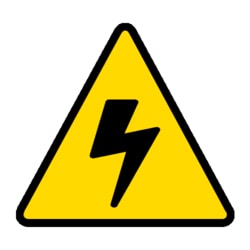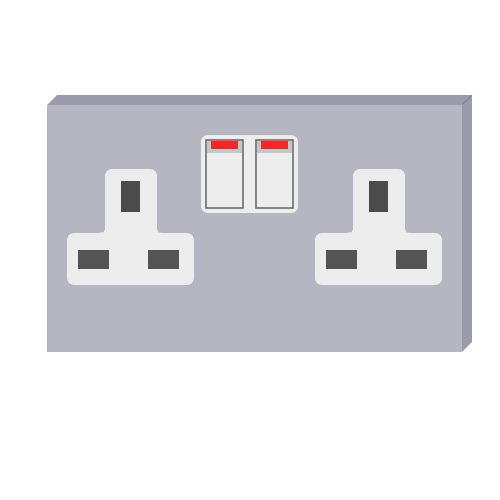Certified by the following organisations

Issues with the electrics of a property can have severe consequences, from defective electrical work causing an electric shock to overloaded electrical installations causing an electrical fire, an EICR helps identify potential risks before they become a problem.
It’s especially advisable (not to mention a legal requirement for landlords) for older properties, this is because properties where the wiring was implemented 25+ years ago are more likely to have unofficial and unsafe modifications causing exposed live wires or loose wires which are huge risks for electric fires or shocks.

The English regulations that relate to EICR are “The Electrical Safety Standards in the Private Rented Sector (England) Regulations 2020”. These regulations came into force in June 2020 for new tenancies and will come into effect for existing tenancies on 1st April 2021. The regulations require landlords to have electrical installations in rented properties be inspected and tested by a competent person at least every 5 years. See “What it all means for you” to find a full list of what you are required to do by these regulations.
New build properties or properties that have been totally rewired should have an Electrical Installation Certificate (EIC) which can be provided to tenants (and the local authority if requested). The landlord will not need to have an EICR completed for 5 years after the EIC has been issued, providing they have complied with their duties under the Regulations.
If remedial reports or further investigation is required by the EICR then it is the landlords responsibility to have these carrier out within 28 days (or less if specified in the report), and once the work has been completed the landlord must provide written confirmation of this to both the tenant and local authority within 28 days. If the remedial work is not undertaken and the local authority has reasonable grounds to believe that the landlord is breaching one (or more) of their duties in the Regulations then they will serve a remedial notice on the landlord. If the remedial work is still not undertaken then the local authority may arrange for remedial action to be taken, and can recover the costs of the remedial actions from the landlord.
Financial penalties of up to £30,000 can be imposed by local authorities on landlords who are in breach of their duties.

The Scottish regulations that relate to EICR are “The Housing (Scotland) Act 2014”, which introduced rules on mandatory electrical safety testing from December 2015 for new tenancies and December 2016 for existing tenancies.
The regulations require landlords to have electrical installations in rented properties be inspected and tested by a competent person at least every 5 years. This electrical safety inspection has two parts and includes an inspection of installations, fixtures and fittings (EICR), and a record of testing of appliances provided by the landlord (PAT).
Any element classified within the EICR report as C1 or C2 must be rectified to comply with the repairing standard.
New build properties or properties that have been totally rewired should have an Electrical Installation Certificate (EIC) which can be provided to tenants (and the local authority if requested). The landlord will not need to have an EICR completed for 5 years after the EIC has been issued, providing they have complied with their duties under the Regulations.

While Wales currently has no specific legal requirements for landlords to have an EICR performed*, there are rules that landlords must provide a safe property for their tenants throughout the tenancy. Issues with electrical systems such as old or faulty wiring can cause safety issues especially if unidentified for a long period of time.
*Landlords of HMOs are required to have an EICR carried out every 5 years.
The purpose of the survey is to inspect the fixed electrical aspects of the property to ensure that they meet the standards set out in the 18th edition of the Wiring Regulations (also known as BS 7671).
The survey will find out if:


“Fixed” electrical aspects refers to things like:
Appliances like televisions, cookers, fridges, freezers, microwaves, kettles, etc. are not inspected during an EICR survey, however as good practice landlords are recommended to regularly carry out PAT (Portable Appliance Testing) on any electrical appliance they supply for their tenants. Tenants or visitors are expected to ensure their own electrical appliances are safe for use.

A report will be provided after the survey which explains the inspections’ outcomes and provides information on any investigative or remedial work that may be required, this is called an Electrical Installation Condition Report (EICR).
The report uses the following classification codes to indicate where remedial/investigative work must be completed:
As well as the classification codes that relate to electrical installations, the report will include details of any required remedial work/further investigation, and a date that the next inspection is due by.
A landlord is not in breach of their duty to comply with the remedial notice if they can show that they have taken all reasonable steps to comply. Showing that reasonable steps have been taken includes providing copies of all communications (including replies) between themselves, tenants and electricians from where they have attempted to arrange the work.
If the landlord has servicing records and previous safety reports then this can also be provided.
In addition to the above, Scottish regulations require landlords to have PAT included in their electrical inspection. This means that any appliances provided by the landlord must be PAT tested, this includes:
Appliances which fail the PAT must be replaced or repaired immediately. It is not the landlords responsibility to test tenant owned appliances.
As a landlord of:
 Domestic Properties
Domestic Properties
In regards to electrical safety, domestic landlords must comply with the following requirements:
Failure to comply with these regulations may incur financial penalties up to £30,000.
Need an EICR? Get your no obligation or hidden fees quote today.
 Commercial Properties
Commercial Properties
While the above legislation is aimed at domestic property landlords, it’s important to note that commercial landlords do have a legal duty of care to both tenants and visitors of your commercial property.
Need an EICR? Get your no obligation or hidden fees quote today.
